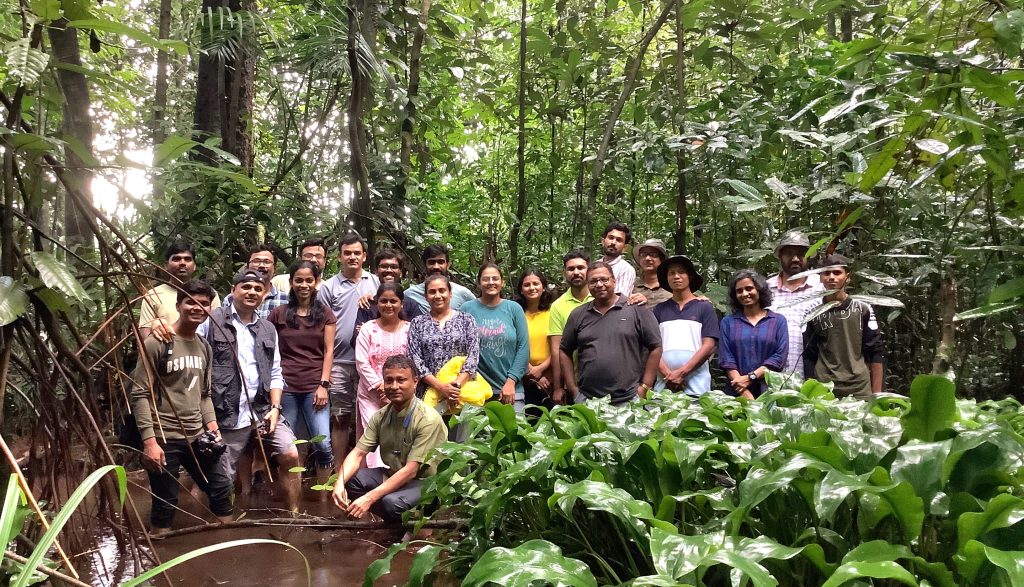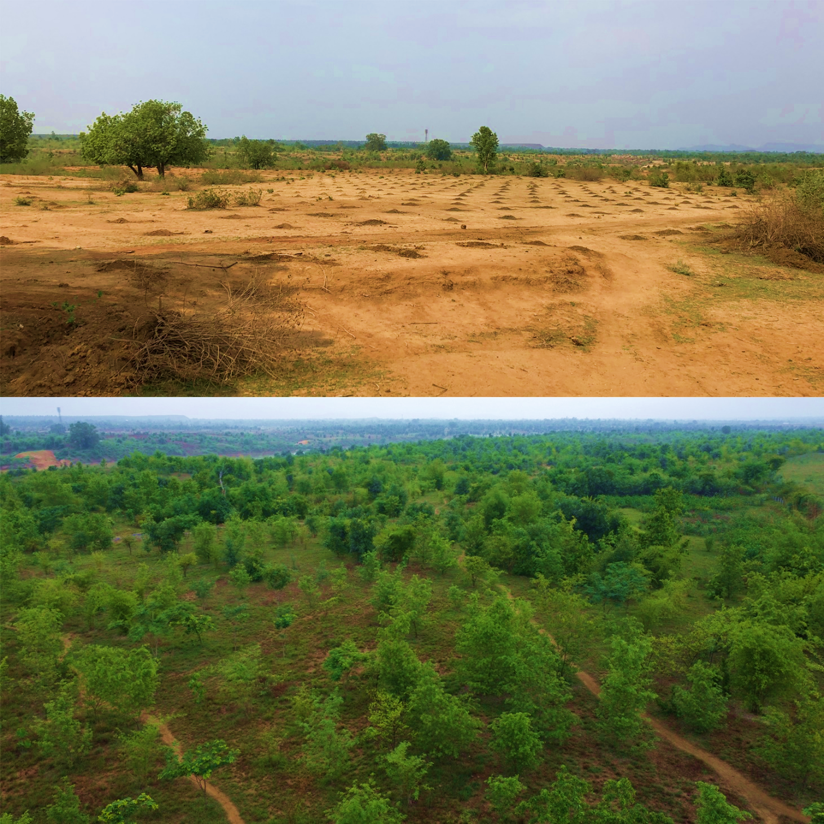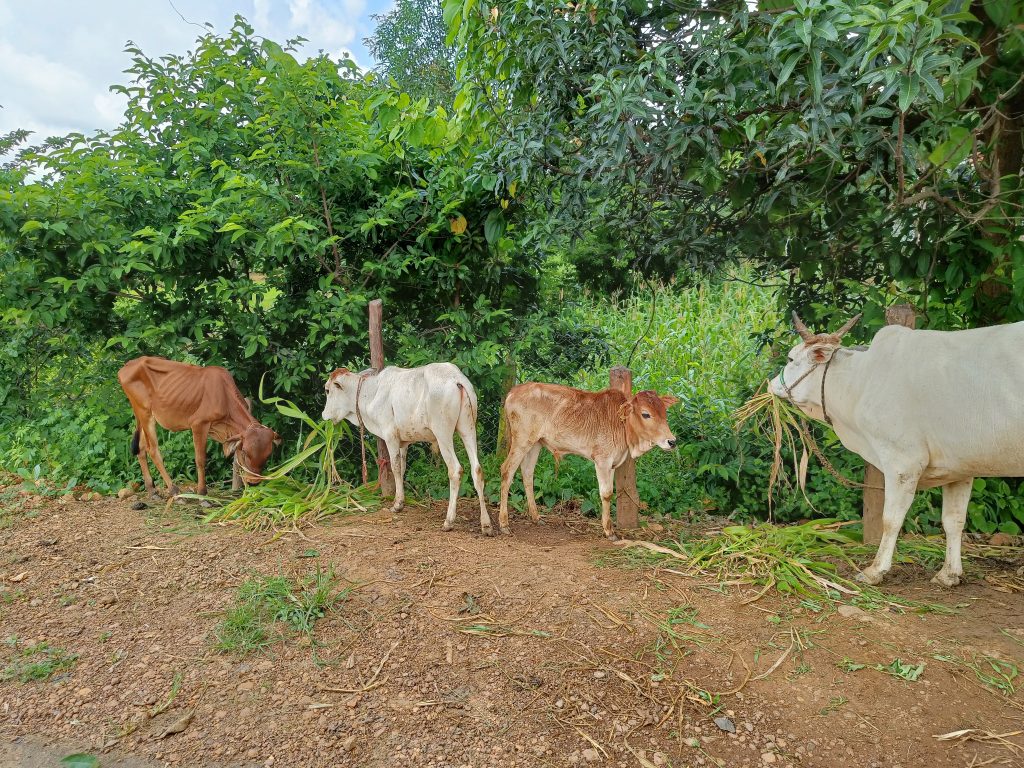The Corbett Foundation (TCF) is one of the partners of the Satpuda Landscape Tiger Partnership, founded by Born Free in 2004. TCF works in and around the tiger reserves of Corbett, Kanha, the Kahna-Pench Corridor, Bandhavgarh and Kaziranga. The organisation works closely with local communities to reduce their reliance on natural forest resources, as well as for mitigating human-carnivore conflicts. To celebrate International Tiger Day, we spoke with Kedar Gore, Director of TCF.
- What is your background and what encouraged you to become a tiger conservationist?
I have been involved in the field of wildlife conservation since November 1996, when I joined WWF-India after completing my Master’s Degree in Zoology. However, since my school and college days, I enjoyed traversing the wilderness of India. My love for wildlife and passion to explore nature were the primary drivers for me to take up wildlife conservation as a profession. My travels across India’s forests opened my eyes to the realities and challenges in tiger conservation at both the local and global levels. Being a tiger conservationist was a natural progression for me.
- What is the importance of tigers in the ecosystem?
Tigers are an iconic species and are synonymous with India’s culture and natural heritage. Ecologically tigers are an apex predator and protecting tigers encompasses protecting its habitat along with its prey and the entire ecosystem they inhabit. The forests that tigers inhabit, are sources of hundreds of rivers, goldmines of genetic diversity, oxygen producing factories and act as climate stabilisers. When we save tigers’ home in the wild, we are not only saving millions of other species but also helping to mitigate the negative effects of climate change.
- What are the main threats to tigers?
There are several reasons why tiger numbers are sadly dwindling. But the top reasons are: fragmentation, degradation and loss of habitat; poaching for trade in tiger body parts; conflict with human beings for space and resources; inadequate political support; and unsustainable development projects in tiger landscapes. The distribution of tigers in India is quite disproportionate – some areas have very low tiger occupancy despite the availability of good habitat and some areas face the ‘problem of plenty’ due to a high density of the tiger population restricted in increasingly small forest areas, leading to limited connectivity with other tiger populations, and a high degree of human-tiger conflict. Retaliatory measures adopted by aggrieved communities to eliminate ‘problem animals’, encroachment on forests, free grazing of livestock and a dependency on wood are further reasons that put tigers and local communities in conflict with each other.
- What actions is The Corbett Foundation taking to address these threats?
The issue of negative interactions between humans and wildlife is a significant challenge for tiger conservation. These interactions can have dangerous consequences for both humans and tigers and can also have significant socio-economic impacts on local communities.
To address this challenge and encourage peaceful coexistence, TCF adopts a ‘holistic approach’ to conservation which includes interventions in the areas of ecological research, biodiversity conservation, mitigation of negative human-wildlife interactions, habitat restoration, sustainable livelihoods, watershed development, sustainable rural development, human and veterinary health, policy and advocacy.
TCF has been implementing sustainable solutions for the past 30 years. Our approach involves identifying the root causes of negative human-wildlife interactions, determining critical areas for intervention, and implementing strategic measures. Our goal is to promote harmonious relations between humans and wildlife while preserving India’s natural heritage. Across India, TCF’s conservation initiatives have reached to over 600 villages in important tiger conservation landscapes, including the Central Indian Landscape consisting of Kanha, Bandhavgarh, Sanjay-Dubri, Pench and Satpuda tiger reserves and areas of Kanha-Pench and Bandhavgarh-Sanjay Dubri corridors.

The Corbett Foundation Team
- Can you tell us about a typical day for you as a tiger conservationist?
As tiger conservationists, we have to work at many levels – from the grassroots to the policy. On one hand, we have to work with the local communities to ensure a harmonious coexistence between them and wildlife, while on the other hand, we need to be watchful of the destructive projects that may be thrust upon the already fragmented tiger landscapes. To implement tiger conservation projects, we need sustained funding and raising funds becomes an important part of our work. Networking and partnering with fellow conservationists to amplify and further strengthen the work is also essential.
- What have been some of The Corbett Foundation’s main successes in Central Indian Landscape?
TCF has implemented several impactful grassroots projects that have the potential to be replicated and scaled up. Some of TCF’s successes include:
- restoring around 500 hectares (5 km2) of degraded forest habitat by planting over 300,000 native tree and bamboo saplings to recreate habitat for tigers and other species.
- fencing around 1,200 open wells in Bandhavgarh landscape to prevent wild mammals accidentally falling in or damaging the well.
- providing compensation to villagers for the loss around 2,900 livestock, improving attitudes and preventing retaliatory killing of tigers
- successfully demonstrating the stall-feeding project in Kanha which has provided over 35,000 kg of fodder to 300 animals in two years
- modifying over 400 cattle sheds to prevent the harvesting of natural wood, equivalent to around 1,400 mature trees.
- providing over 2,000 energy-efficient cookstoves with a potential to reduce the dependency on forest-sourced fuel wood by 50%.

TCF’s Habitat Restoration Project in Bandhavgarh Tiger Reserve

TCF’s Stall Feeding Project in Kanha Tiger Reserve
- What are the future plans of The Corbett Foundation?
Building upon the successful interventions demonstrated by TCF over the past three decades, we remain steadfast in our commitment to creating a future where people and wild animals can live together without conflict. Moving forward, we aim to continue to implement targeted interventions across our existing landscapes while also expanding our efforts to newer regions. One of our key priorities is strengthening the existing interventions that have proven to be successful. We understand the importance of maintaining and enhancing these initiatives, ensuring their sustainability and effectiveness. Through rigorous monitoring and evaluation, we will continue to refine and adapt our approaches to maximize their impact.
Moreover, collaboration and partnerships play a vital role in our strategy. We firmly believe that working together with different stakeholders is essential for long-term success in mitigating negative interactions between humans and wildlife. Therefore, by leveraging these partnerships we look forward to combining resources, sharing knowledge, and implementing comprehensive strategies that address the complex challenges associated with coexistence.
- Would you encourage the public to be hopeful for the future of tigers?
Of course, yes! With almost 75% of the world’s wild tigers, India is the undisputed global leader. In April 2023, India completed 50 years of Project Tiger, one of the longest and largest tiger conservation programmes ever implemented by the government of any tiger range country. The successes and failures of this ambitious programme have provided us with enough knowledge of what works best to protect wild tigers. India has some of the best scientists, tiger biologists and conservationists, who have the potential to steer the tiger conservation programme using effective and robust conservation science. Despite the challenges in tiger conservation, I am quite confident that India will make sure that tigers continue to flourish in its forests for many more decades. With the experience of five decades of the Project Tiger, India now needs to plan for the next 50 years by reflecting objectively on what has worked well so far and what could have been done differently to achieve tiger conservation with minimal human-wildlife negative interactions.
- What is your most memorable encounter with a tiger?
It is difficult to single out an encounter that is most memorable, as every time I see a tiger the feeling is extremely special, humbling, and divine. But if I have to mention one then the first tiger I saw way back in the 1990s remains etched in my mind. It was a beautiful male tiger sitting on the road its winter coat shining in the morning golden light. It eventually walked elegantly alongside our bus (buses were allowed then in the park) sniffing the grass blades and occasionally marking its territory with its urine. It walked slowly through the meadow and finally disappeared in the nullah (trench).
- Why are people and communities so important in conservation?
Most tiger landscapes in India are multiple use areas with a mosaic of forests, villages, agricultural land, and privately-owned areas, which are quite often hotspots for human-wildlife conflict, such as livestock predation by tigers and leopards, occasional attacks on humans by large cats and crop raiding by tiger’s prey (deer, nilgai and wild boar). It is not uncommon for aggrieved people to act in retaliation, such as poisoning of livestock carcasses and waterholes, use of live electricity wires and snares to harm tigers and crop-eating animals. The lack of legitimate and sustainable livelihood opportunities in forest areas is a serious issue. The frustration that often creeps in youths in rural areas who struggle to find job opportunities to their urban counterparts, is one of the reasons why youths are drawn into antisocial activities including poaching of wildlife. It is therefore very important to involve the local communities in tiger conservation programmes.
To expect the local communities sharing space with tigers to bear the cost of tiger conservation without getting economically benefitted in any way will only be counterproductive. Therefore, it is important that different models of tiger conservation need to be experimented, and local communities need to become partners. These may not be possible in Protected Areas but certainly worth trying out in forests that act as corridors between Protected Areas. This requires a different approach with local communities becoming the primary beneficiaries and the role of governmental agencies limited to making policies that govern these models.
- How can we, in our daily lives, help tigers?
There are several actions that people can take that would benefit tigers:
- Preventing water wastage and creating less rubbish helps in reducing our ecological footprint. Superfluous use of freshwater in urban areas has resulted in more and more large dams being built by drowning forests.
- Do not keep wild animals and birds, especially if they are exotic, as pets and dissuade others from doing so. We unknowingly support an illegal supply chain in wildlife trade. Report wildlife crimes (caged wild animal/bird/turtles/tortoises) to local police or forest departments.
- If visiting India, visit at least one tiger reserve during your vacation and aim to stay in places run by local communities or resorts/hotels that have a track record of practicing sustainability and supporting conservation work.
- Say no to petting tigers as these animals are subjected to lots of cruelty and many can be traced back to the illegal wildlife trade.
- Raise your voice in support of tiger conservation issues using social media platforms. Make sure your voice is heard by policy makers.
- Support organisations such as The Corbett Foundation and volunteer to be a part of grassroots conservation programmes.
- If possible, offer monetary support for any conservation project that supports the needs of local communities that share space with tigers.
- What is your favourite interesting thing about your job?
To be able to implement grassroots conservation projects and see their impact is the most satisfying part of my job. Working towards creating harmonious coexistence between wildlife and local communities and mitigating human-wildlife conflict is challenging, but an area of my job that I always look forward to. I am privileged to be able to work in wildlife conservation and be one of the strong voices that have made it a mission to protect India’s tigers and natural ecosystems. I couldn’t have asked for anything else to be my destiny!
- What has been your experience of working with Born Free as a part of SLTP?
It has almost been a decade that The Corbett Foundation has been a part of the Satpuda Landscape Tiger Partnership (SLTP). The experience has been extremely satisfying. The best part are the interactions between all the partners of this network. Experiential learning and concerted joint action to further the cause of tiger conservation is the biggest success of SLTP. Born Free has played an important role in providing monetary support to the partners for almost two decades and has ensured that this partnership has grown stronger over the years. Thank you Born Free!
- Why is Global Tiger Day important for tiger conservation?
Not only July 29th but for us every day must be celebrated as Tiger Day! Observing this day draws global attention to the challenges in protecting tigers. The tiger range countries track the progress of the tiger conservation targets they had set for themselves at the St. Petersburg Declaration on Tiger Conservation in 2010. I am glad that India has proved its mettle and achieved many of the milestones. But of course, much more needs to be done as more and more challenges emerge. Therefore, there is a need to observe a day when the entire world thinks about this iconic large cat and pledges support for its long-term survival.
- Is there anything you would like to say to Born Free supporters?
I would like to express my deep gratitude to Born Free supporters. It is because of their ongoing support that Born Free has managed to initiate and facilitate programmes such as SLTP. The tigers in India will remain ever grateful to all of you!

